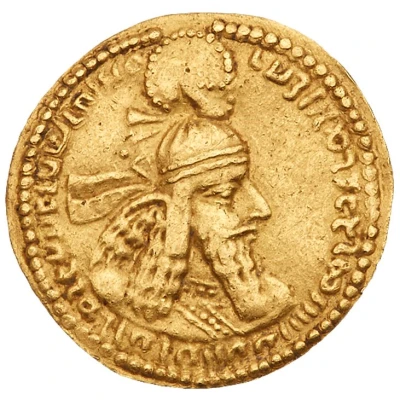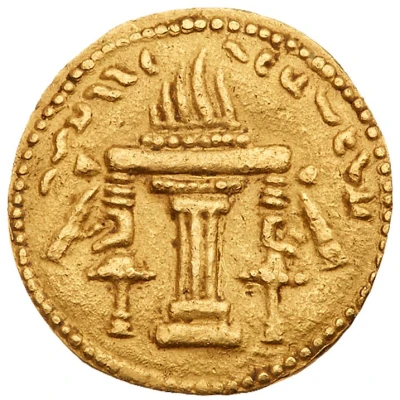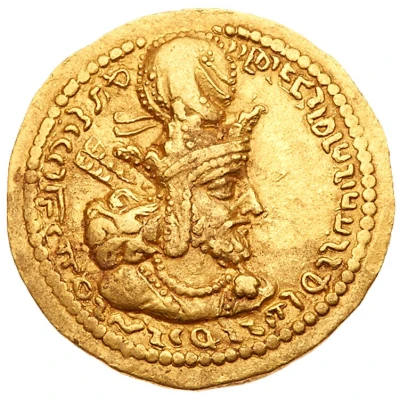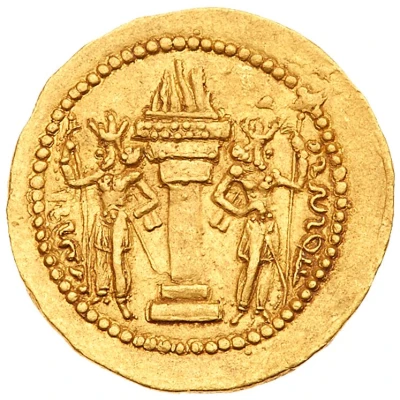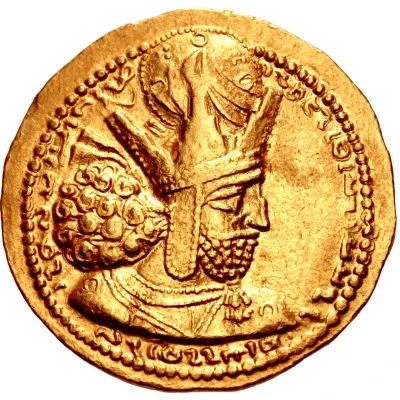
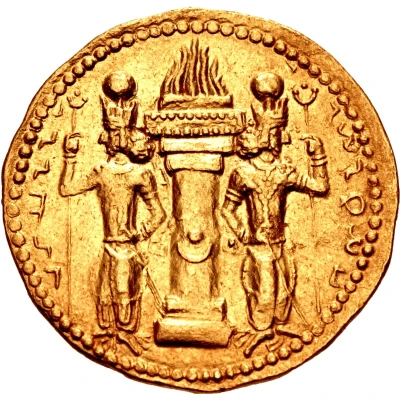

© سامعی (CC BY)
Dinar - Shapur I type II
| Gold | 7.32 g | 24 mm |
| Issuer | Sasanian Empire (Sasanian Empire (224-651)) |
|---|---|
| Emperor | Shapur I (240-270) |
| Type | Circulating commemorative coin |
| Years | 240-272 |
| Value | Dinar (1) |
| Currency | Dinar (224 AD-651 AD) |
| Composition | Gold |
| Weight | 7.32 g |
| Diameter | 24 mm |
| Shape | Round (irregular) |
| Technique | Hammered |
| Orientation | 3 o'clock ↑→ |
| Demonetized | Yes |
| Updated | 2024-10-10 |
| Numista | N#191214 |
|---|---|
| Rarity index | 95% |
Reverse
The fire-altar (atasdan)is in the form of high column with a capitellum and base. Along the sides of atasdan there are two attendants wearing crowns with globes, with swords by their waists and spears in their hands. The figures stand with their backs to the altar. Pellet-in-crescent on altar shaft.
Pahlavi legend
Lettering: NWR ' ZY shpwhr
Translation: Fire (fire-temple) of Shapur
Edge
Plain
Comment
SNS (Type IIc/2a) Style A or A/terInteresting fact
One interesting fact about the Dinar - Shapur I (type II) coin is that it features a unique blend of Persian and Roman influences in its design. The coin's obverse side features a portrait of King Shapur I, while the reverse side depicts a crowned king standing on a throne, surrounded by two attendants. This blend of styles reflects the cultural exchange and influence that occurred between the Sasanian Empire and the Roman Empire during this time period.
